Are you ready to go on an incredible journey through the animal kingdom? Imagine a world where iguanas bask in the sun, ibexes scale cliffs, and iridescent butterflies dance on the breeze.
These are just a few charming animals inhabiting our planet with ‘I’ names. From the depths of the oceans to the heights of mountains, creatures beginning with I showcase nature’s diversity.
Did you know there are over 30 amazing animals whose names start with this letter? This list will take you on an adventure, introducing you to familiar faces and rare species.
Whether you’re an animal enthusiast, a curious learner, or simply looking to broaden your knowledge, our exploration of animals with I will surely ignite your imagination and leave you wanting to discover more.
30 Animals Beginning with ‘I’
Studying the animal kingdom reveals an astonishing variety of species, each unique. From the icy regions of the Arctic to the dense rainforests of Madagascar, animals that start with the letter ‘I’ inhabit diverse ecosystems around the world.
This list showcases thirty remarkable creatures, including birds, reptiles, mammals, and some prehistoric species.
Each entry provides a glamorous glimpse into their characteristics, habitats, and roles in the natural world, highlighting life’s incredible diversity and adaptability.
Immerse yourself in this mesmerizing compilation and discover the compelling stories behind these animals.
1. Ibex

The ibex is a wild goat species known for its long, curved horns and exceptional climbing ability.
These agile animals live in mountainous regions, using their hooves to firm up rocky surfaces.
Social creatures, ibexes, often form herds and are crucial to their ecosystems.
- Region of Habitat: Europe, Asia, Africa
- Scientific Name: Capra
- Place of Origin: Europe, Asia, Africa
- Feeding Habits: Herbivorous, feeding mainly on grasses and shrubs
- What Sound They Make: Bleats
Fun Fact: Ibexes can leap 6 feet from a standstill, showcasing their remarkable agility.
This helps them evade predators and navigate their rugged habitats effectively.
2. Ibis

The ibis is a wading bird characterized by its long legs and curved beak, which are ideal for probing mud for food.
Highly social, these birds are often found in large flocks and play a significant role in controlling insect populations and spreading seeds.
- Region of Habitat: Swamps, marshes, wetlands worldwide
- Scientific Name: Threskiornithidae
- Place of Origin: Worldwide
- Feeding Habits: Omnivorous, feeding on insects, fish, and other small aquatic animals
- What Sound They Make: Grunts and croaks
Fun Fact: Ancient Egyptians revered the ibis as a sacred bird, associating it with the god Thoth.
Today, they continue to be important symbols in various cultures.
3. Ibizan Hound
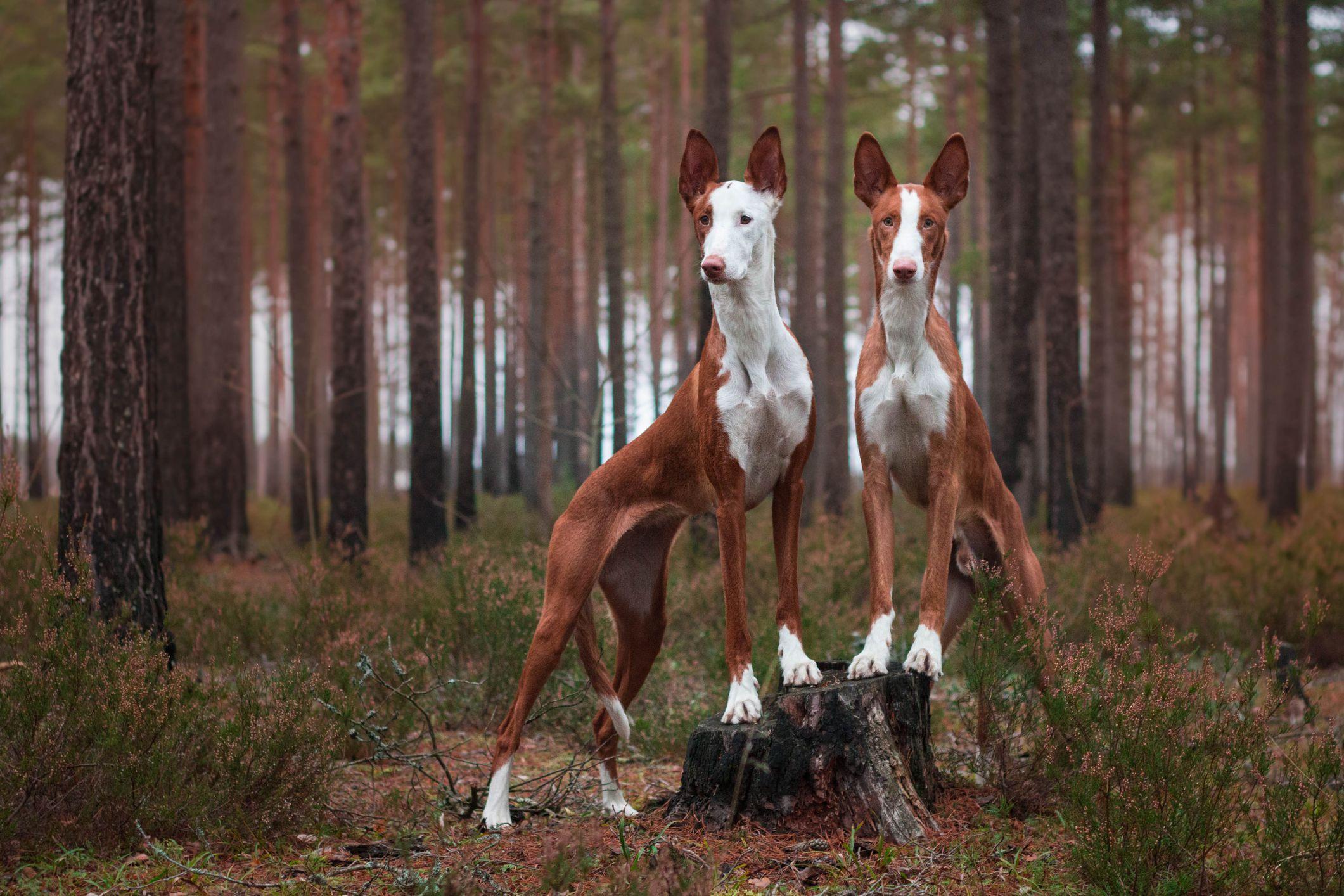
The Ibizan Hound is a dog breed from the Balearic Islands, known for its elegance and speed.
Historically used for hunting rabbits, this breed is intelligent, energetic, and has a keen sense of sight and smell, making it an excellent hunter and companion.
- Region of Habitat: Balearic Islands, globally as pets
- Scientific Name: Canis lupus familiaris
- Place of Origin: Balearic Islands
- Feeding Habits: Carnivorous, mainly small game and commercial pet food
- What Sound They Make: Barks and howls
Fun Fact: Ibizan Hounds can jump incredibly high, often clearing fences over 5 feet tall.
This ability made them valuable hunting dogs in challenging terrains.
4. Icadyptes
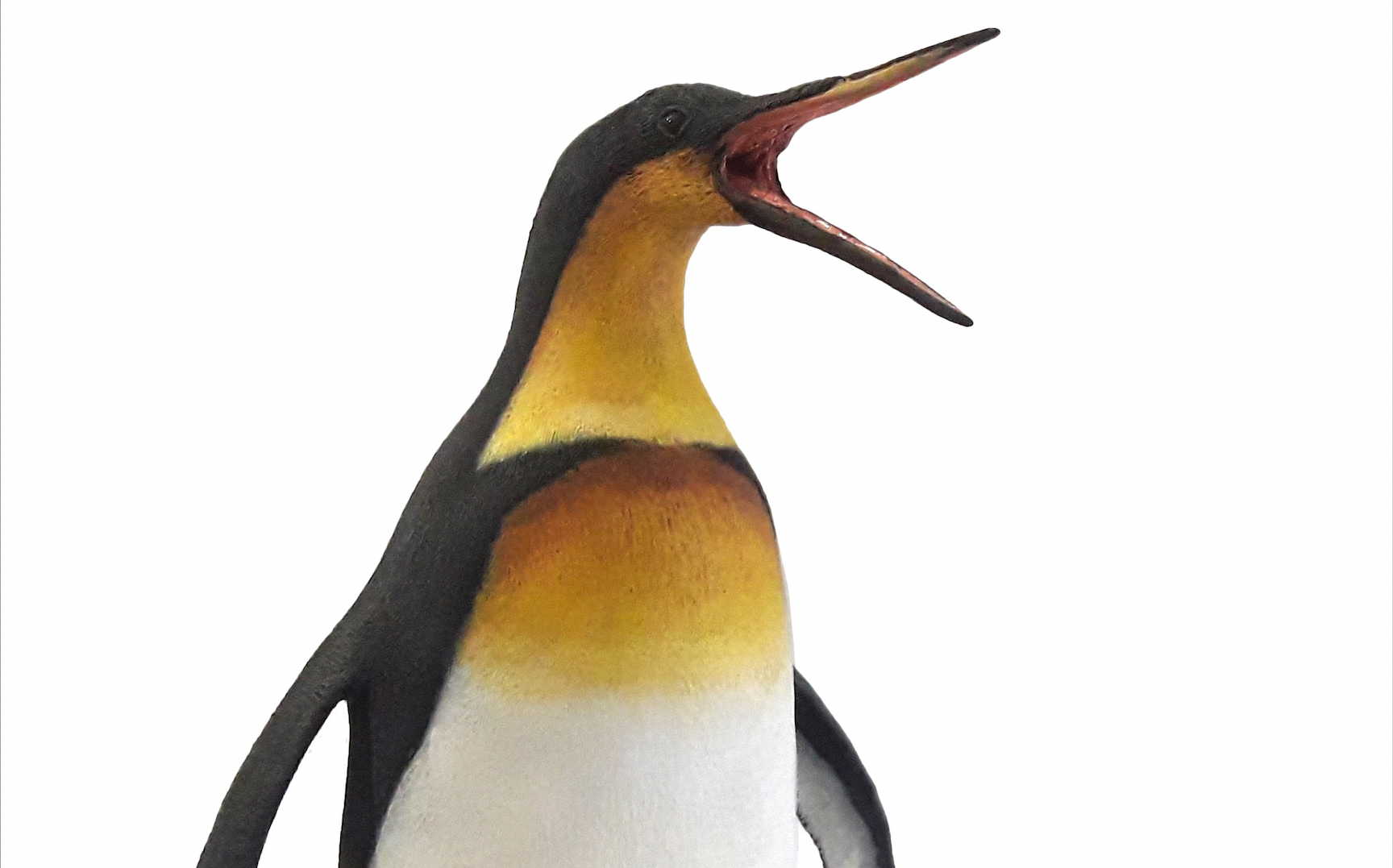
Icadyptes is an extinct genus of large, flightless birds that lived during the Late Eocene period.
These ancient relatives of modern penguins inhabited warm, equatorial regions, unlike today’s cold-dwelling penguins.
Their fossils provide valuable insights into the evolution and adaptability of early penguins.
- Region of Habitat: South America (fossil evidence)
- Scientific Name: Icadyptes salasi
- Place of Origin: South America
- Feeding Habits: Presumed to be piscivorous, like modern penguins
- What Sound They Make: Unknown (extinct species)
Fun Fact: Icadyptes lived in warm habitats near the equator, unlike present-day penguins.
This unusual adaptation challenges our understanding of penguin evolution.
5. Icelandic Sheepdog

The Icelandic Sheepdog is a hardy and friendly herding breed native to Iceland.
Known for its cheerful behavior and boundless energy, this breed has been used for centuries to herd sheep in the rugged Icelandic terrain.
It is recognized for its bushy tails and thick, double coats that protect it from the cold.
- Region of Habitat: Iceland, globally as pets
- Scientific Name: Canis lupus familiaris
- Place of Origin: Iceland
- Feeding Habits: Omnivorous, including commercial pet food and some human foods
- What Sound They Make: Barks and howls
Fun Fact: The Icelandic Sheepdog is the only dog breed entirely native to Iceland. Their friendly nature makes them excellent family pets.
6. Ichthyosaurus

Ichthyosaurus is an extinct genus of marine reptiles that lived during the Mesozoic era.
Resembling modern dolphins, they were highly adapted to life in the ocean, with streamlined bodies and large eyes for deep-sea hunting.
Their fossils are commonly found in Europe, providing insights into prehistoric marine life.
- Region of Habitat: Europe (fossil evidence)
- Scientific Name: Ichthyosaurus communis
- Place of Origin: Europe
- Feeding Habits: Carnivorous, feeding on fish and squid
- What Sound They Make: Unknown (extinct species)
Fun Fact: Ichthyosaurus gave birth to live young instead of laying eggs like other reptiles.
This adaptation is similar to that of modern marine mammals.
7. Ichthyostega
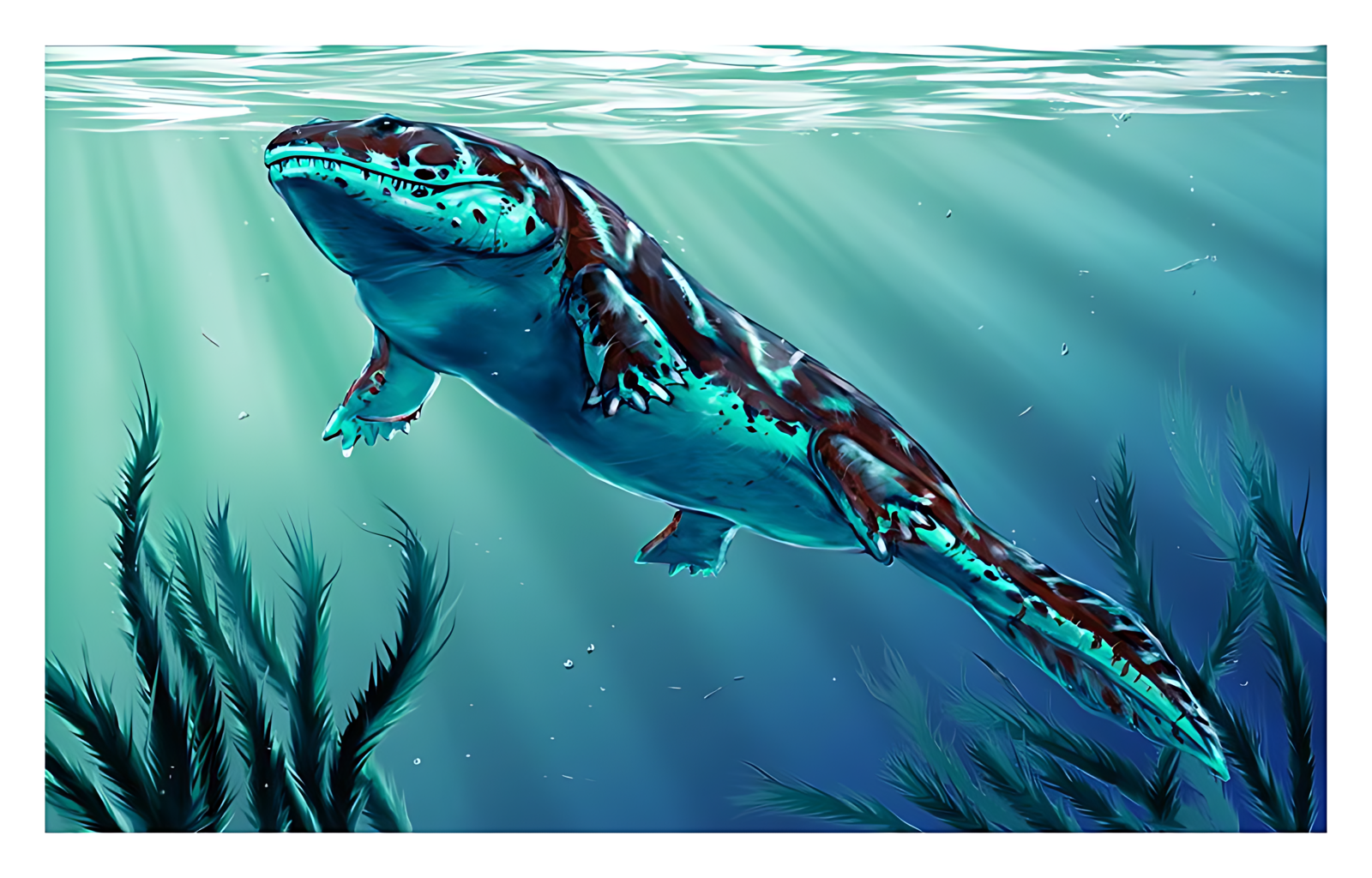
Ichthyostega is an extinct genus of early tetrapods that lived during the Devonian period.
Known for its significant role in the transition from water to land, Ichthyostega had aquatic and terrestrial features.
Its strong limbs and lungs indicate it could move on land, while its tail and fin-like structures suggest it was also an expert swimmer.
- Region of Habitat: Greenland (fossil evidence)
- Scientific Name: Ichthyostega stensioei
- Place of Origin: Greenland
- Feeding Habits: Presumed carnivorous, feeding on small aquatic animals
- What Sound They Make: Unknown (extinct species)
Fun Fact: Ichthyostega was one of the first vertebrates to venture onto land, making it a key species in understanding the evolution of land animals.
8. Iguana
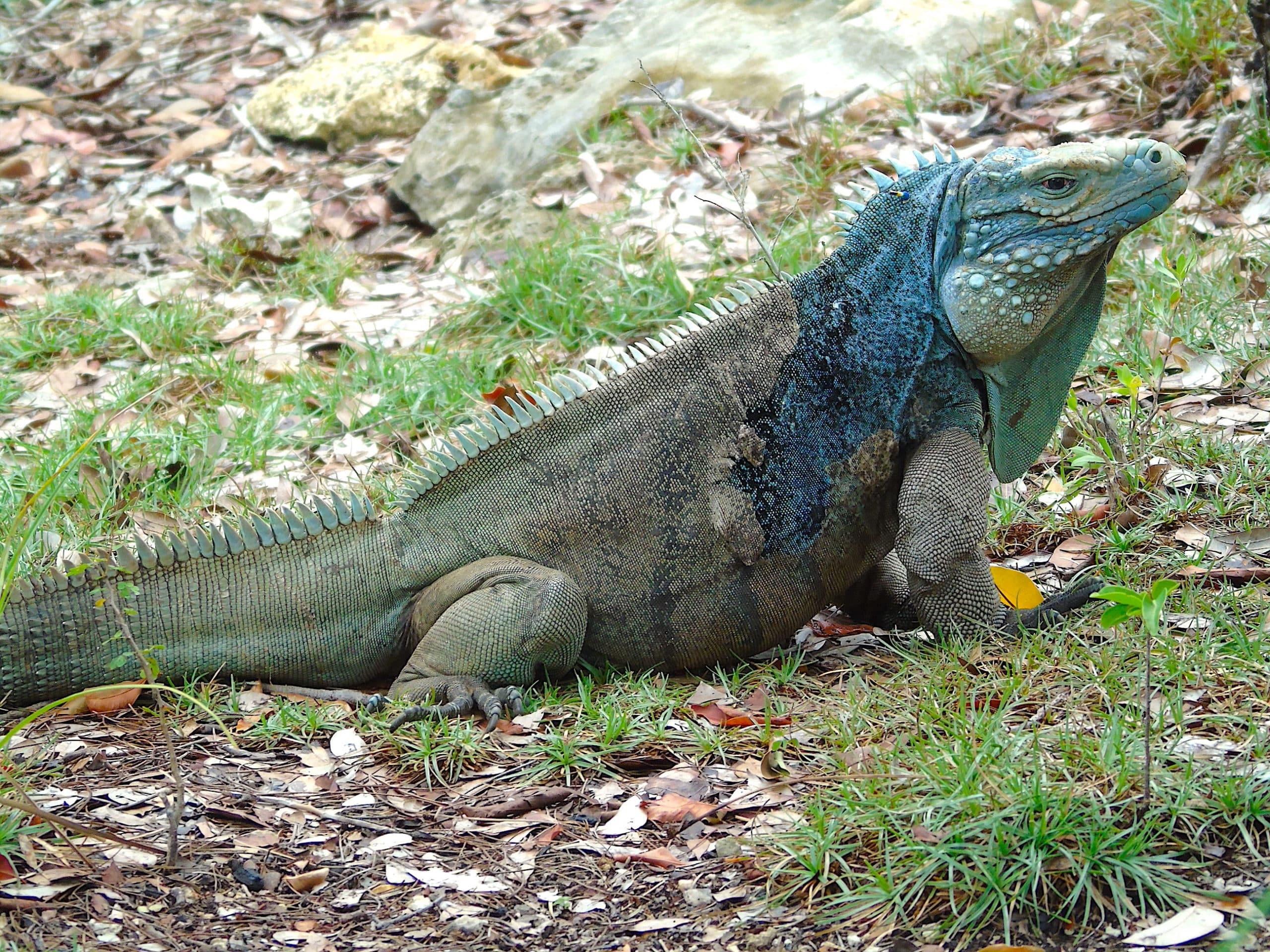
Iguanas are large lizards native to Central and South America and the Caribbean.
They are primarily herbivorous and known for their vibrant green coloration, which helps them blend into their leafy environments.
Due to their docile nature and distinctive appearance, iguanas are popular pets.
- Region of Habitat: Central and South America, Caribbean
- Scientific Name: Iguana iguana
- Place of Origin: Central and South America, Caribbean
- Feeding Habits: Herbivorous, feeding on leaves, fruits, and flowers
- What Sound They Make: Hisses
Fun Fact: Iguanas use visual signals to communicate, such as head bobs and dewlap extensions. These behaviors help them establish territory and social hierarchy.
9. Iguanodon
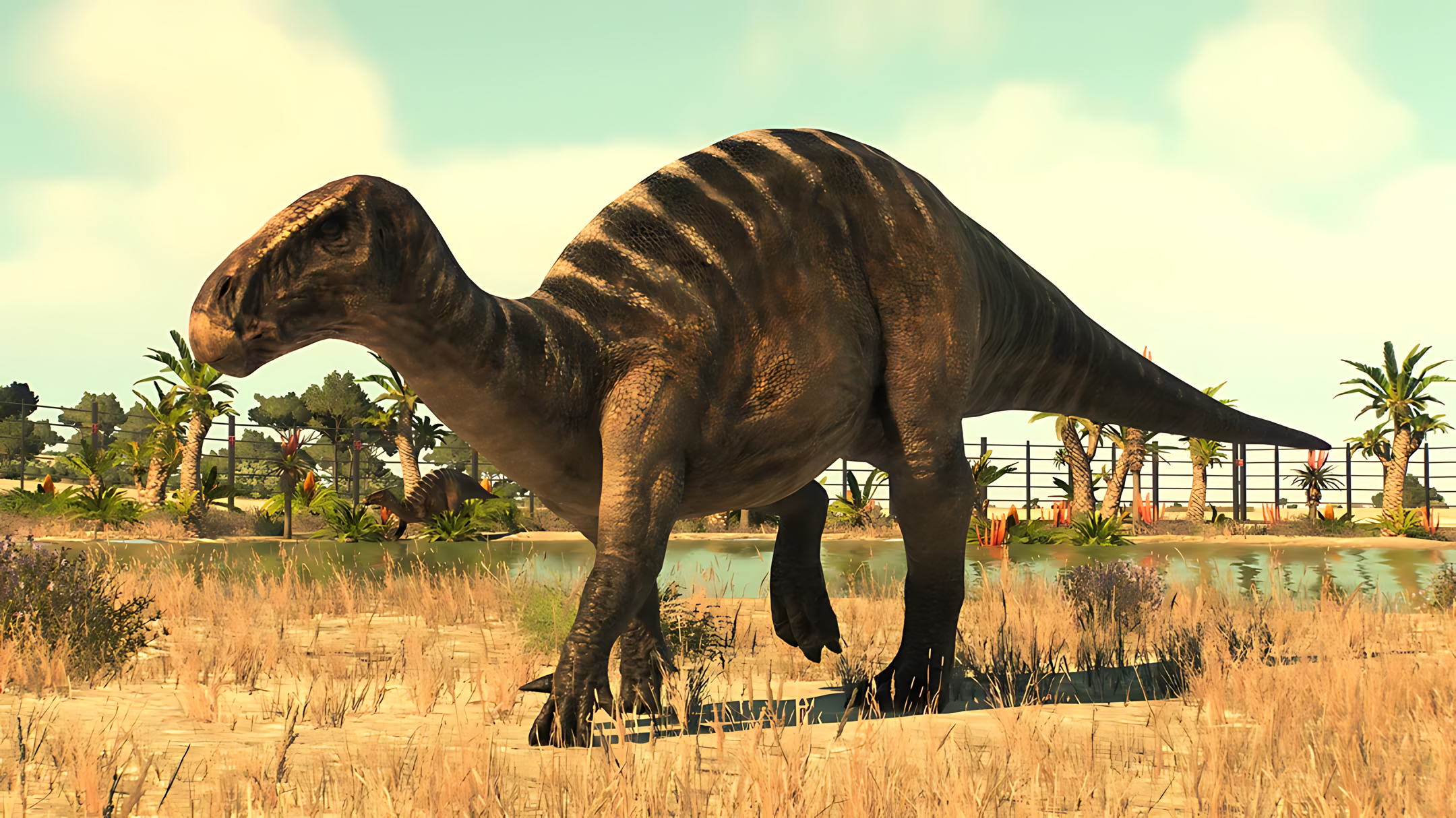
Iguanodon is a genus of large herbivorous dinosaurs that lived during the Late Jurassic and Early Cretaceous periods.
Known for its distinctive thumb spikes, likely used for defense, Iguanodon was one of the first dinosaurs to be discovered and named. Fossil evidence suggests it was a social animal moving in herds.
- Region of Habitat: Europe, North Africa (fossil evidence)
- Scientific Name: Iguanodon bernissartensis
- Place of Origin: Europe, North Africa
- Feeding Habits: Herbivorous, feeding on plants
- What Sound They Make: Unknown (extinct species)
Fun Fact: Iguanodons could walk on two and four legs, providing versatility in movement and foraging.
10. Immortal Jellyfish
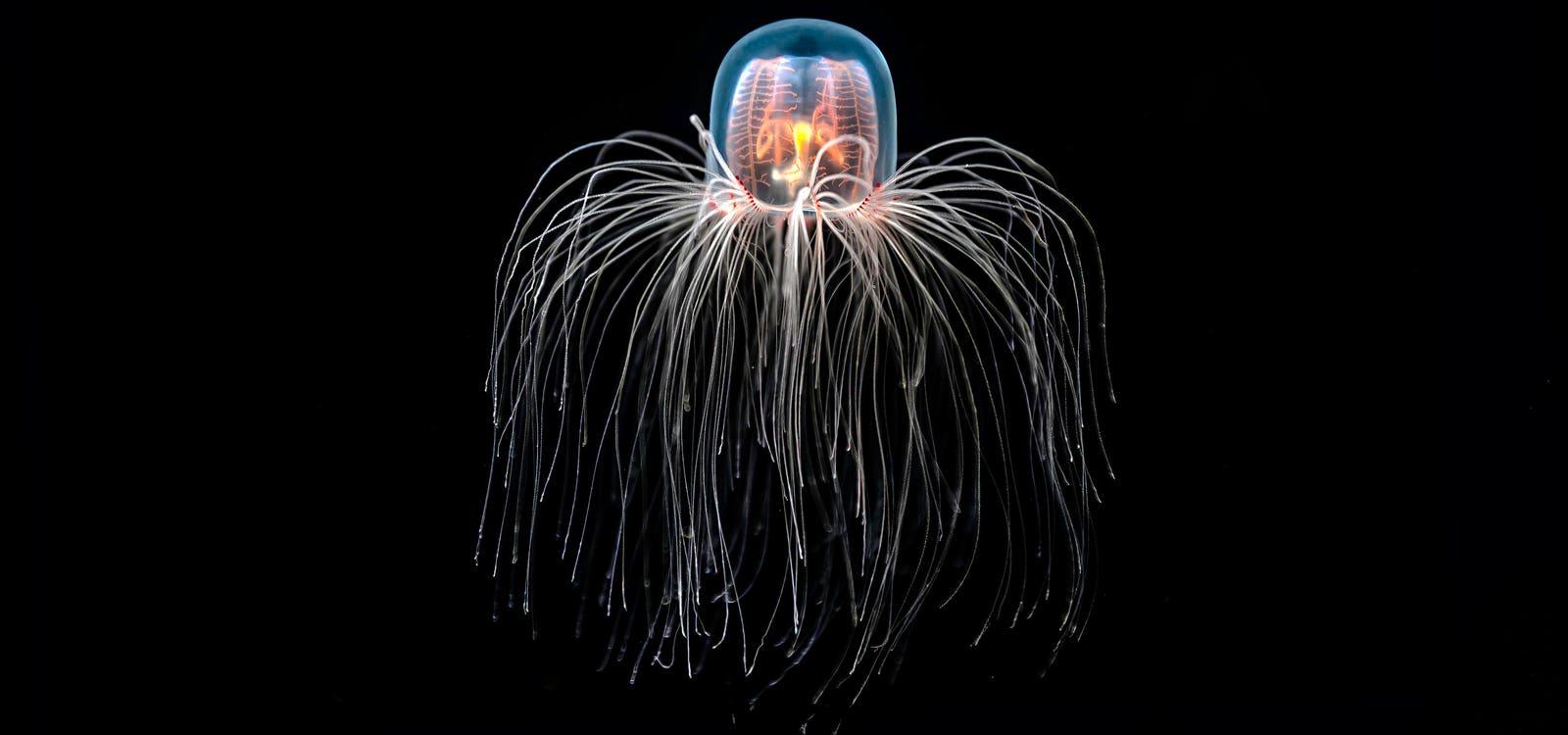
The immortal jellyfish is a unique species known for its ability to revert to its juvenile form after reaching maturity.
This process, called transdifferentiation, allows the jellyfish to bypass death, making it biologically immortal. This charming capability has made it the subject of extensive scientific research.
- Region of Habitat: Worldwide in temperate to tropical saltwater
- Scientific Name: Turritopsis dohrnii
- Place of Origin: Worldwide
- Feeding Habits: Carnivorous, feeding on plankton and small marine animals
- What Sound They Make: Silent
Fun Fact: The immortal jellyfish can theoretically live forever by continuously reverting to its juvenile form. This remarkable process is unique in the animal kingdom.
11. Impala
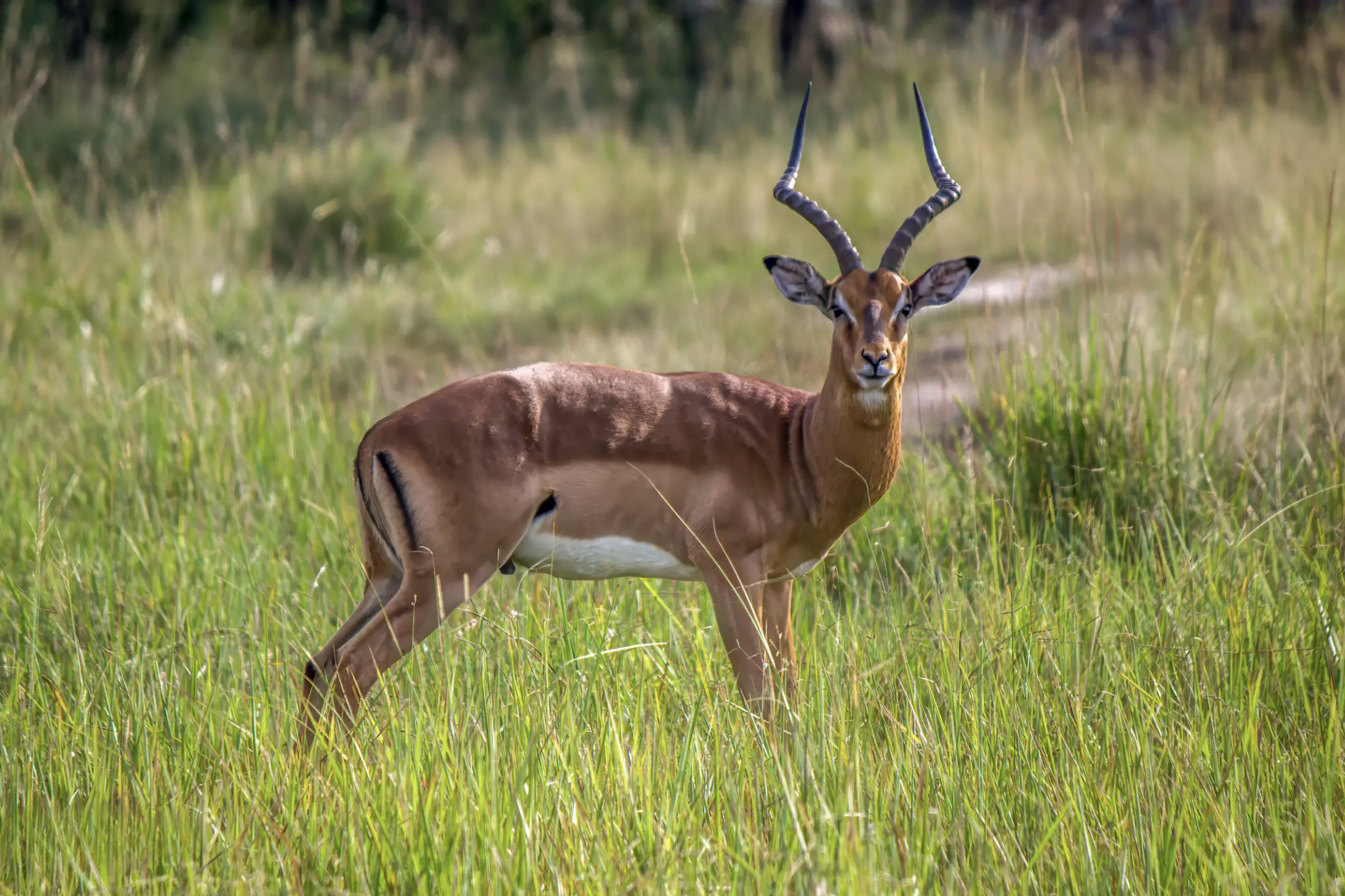
The impala is a medium-sized antelope in Africa’s savannas and light woodlands. Known for its grace and agility, the impala can leap great distances to evade predators.
They are social animals, often seen in large herds, and play a crucial role in their ecosystem by serving as prey for large carnivores.
- Region of Habitat: Southern and Eastern Africa
- Scientific Name: Aepyceros melampus
- Place of Origin: Africa
- Feeding Habits: Herbivorous, feeding on grasses and foliage
- What Sound They Make: Grunts and snorts
Fun Fact: Impalas can leap over 10 feet high and cover distances of up to 33 feet in a single bound. This impressive ability helps them escape predators.
12. Imperial Moth
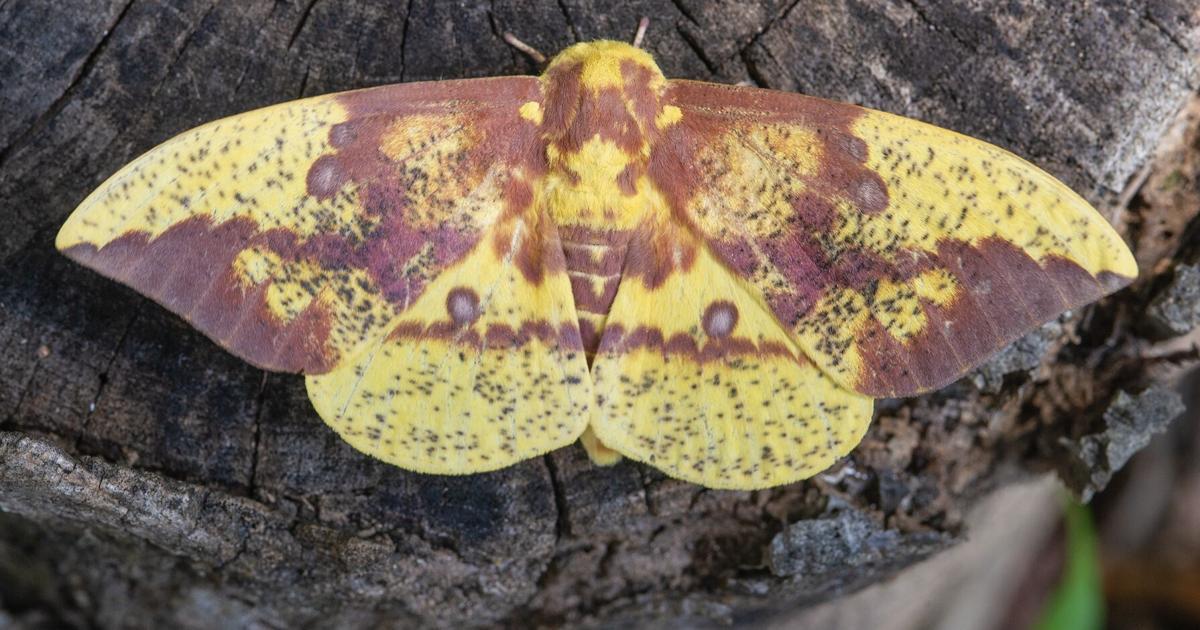
The imperial moth is a large, striking moth with distinctive yellow and purple-brown markings.
Found in North and South America, this moth is known for its brief adult lifespan, during which it does not eat.
The larvae, however, are voracious feeders, often seen on various trees and shrubs.
- Region of Habitat: North and South America
- Scientific Name: Eacles imperialis
- Place of Origin: North and South America
- Feeding Habits: Larvae are herbivorous, feeding on tree leaves
- What Sound They Make: Silent
Fun Fact: The imperial moth’s adult form does not eat and lives only for about a week to reproduce. Their striking coloration helps them blend in with autumn greenery.
13. Inchworm

Inchworms are the larvae of geometer moths, known for their unique looping movement, which resembles measuring the ground.
These small, caterpillar-like creatures feed on leaves and can be found on various trees and shrubs.
They are an important part of the ecosystem, providing food for many birds and other predators.
- Region of Habitat: Worldwide
- Scientific Name: Geometridae (family)
- Place of Origin: Worldwide
- Feeding Habits: Herbivorous, feeding on leaves
- What Sound They Make: Silent
Fun Fact: Inchworms have no legs in the midsection of their body, which causes their distinctive looping movement. This movement helps them mimic twigs as a defense mechanism.
14. Indian Cobra
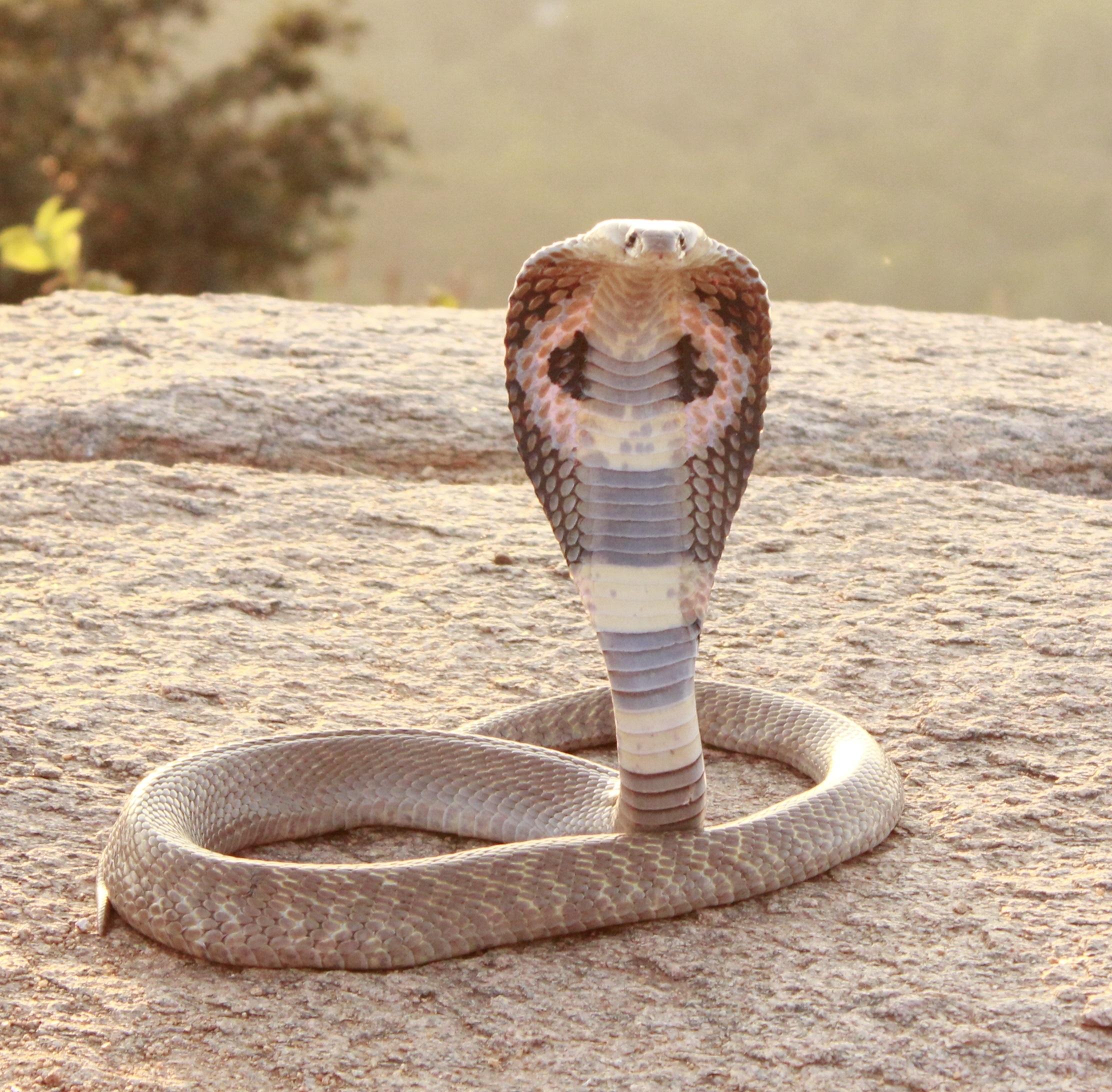
The Indian cobra, also known as the spectacled cobra, is one of the most venomous snakes in the world.
Recognizable by the hood, it flares when threatened; this snake is revered and feared in equal measure in India.
- Region of Habitat: Indian subcontinent
- Scientific Name: Naja naja
- Place of Origin: India
- Feeding Habits: Carnivorous, feeding on rodents, birds, and other small animals
- What Sound They Make: Hisses
Fun Fact: The Indian cobra is often depicted in Hindu mythology and is associated with the god Shiva. This cultural significance adds to its mystique and importance.
15. Indian Elephant
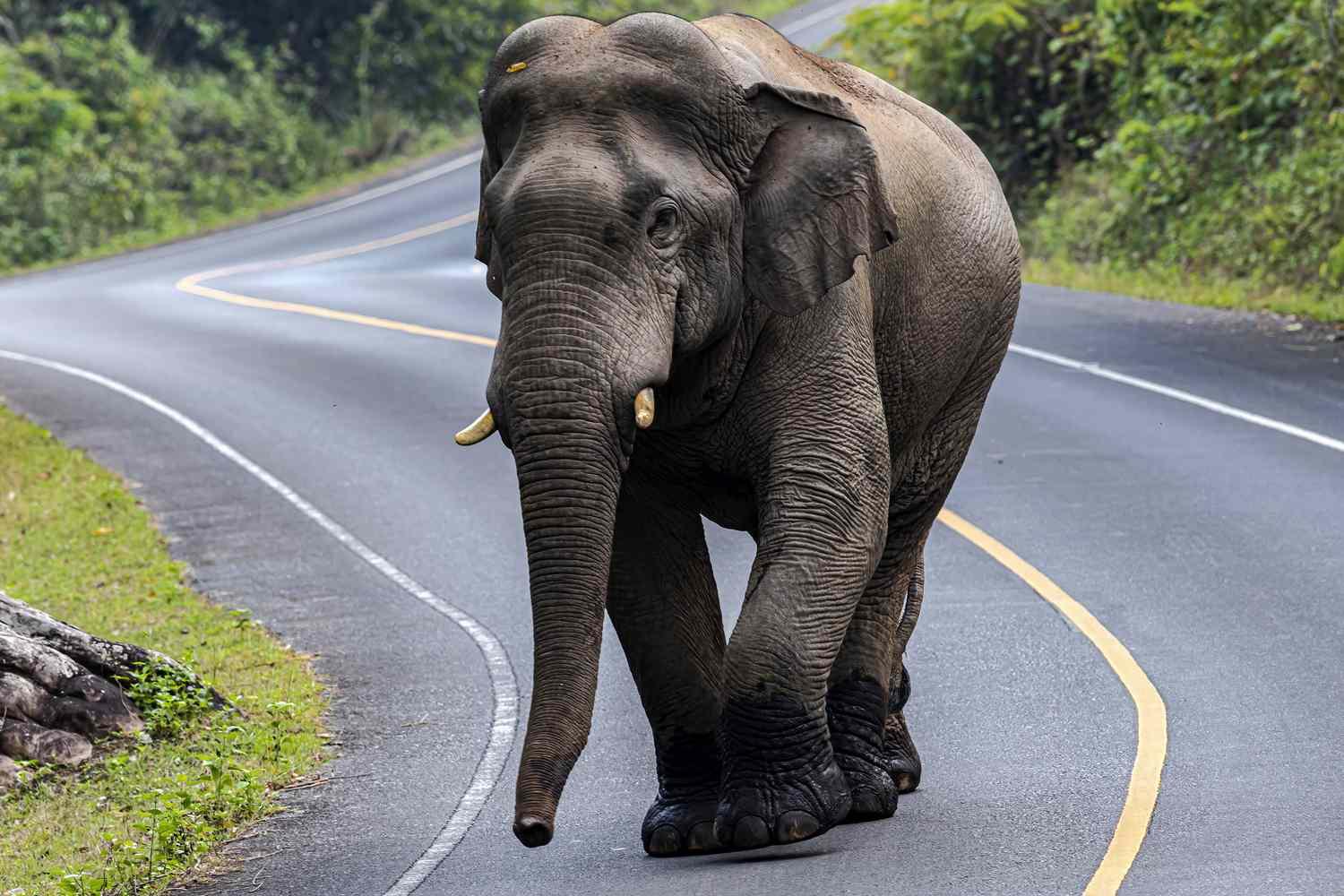
The Indian elephant is a subspecies of the Asian elephant, found primarily in the forests of India and Southeast Asia. It is slightly smaller than its African counterparts and has smaller ears.
Indian elephants are social animals, living in herds led by a matriarch, and are vital to their ecosystems due to their role in seed dispersal and habitat modification.
- Region of Habitat: India, Southeast Asia
- Scientific Name: Elephas maximus indicus
- Place of Origin: India, Southeast Asia
- Feeding Habits: Herbivorous, feeding on grasses, fruits, and bark
- What Sound They Make: Trumpets and rumbles
Fun Fact: Indian elephants play a crucial role in their ecosystems by dispersing seeds through their dung. Their activities significantly shape the environment.
16. Indian Flying Fox
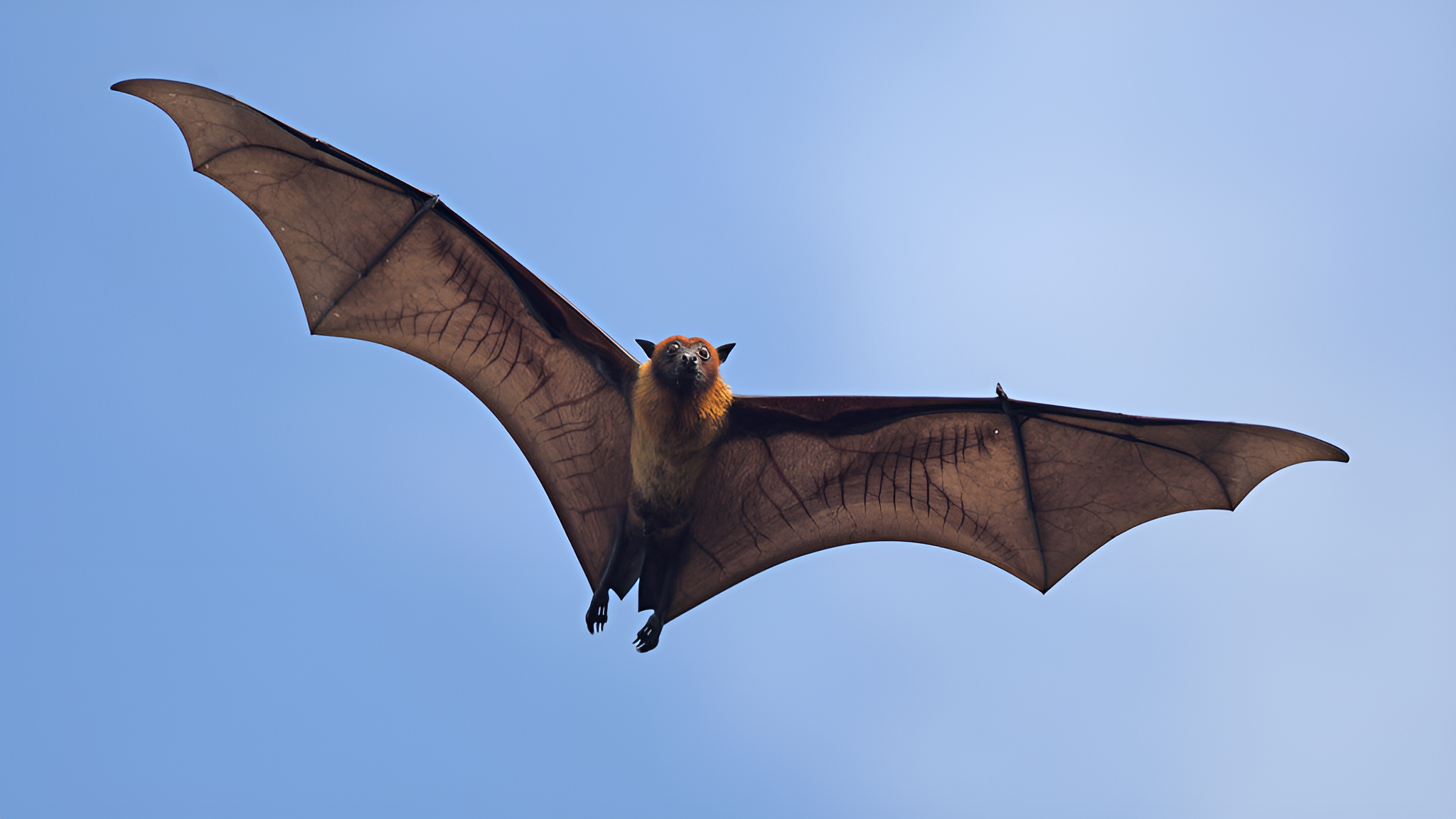
The Indian flying fox is one of the largest fruit bat species known for its impressive wingspan and frugivorous diet.
These nocturnal creatures roost in large colonies in trees during the day and venture out at night to feed on fruit, nectar, and flowers.
- Region of Habitat: Indian subcontinent, Southeast Asia
- Scientific Name: Pteropus giganteus
- Place of Origin: India, Southeast Asia
- Feeding Habits: Frugivorous, feeding on fruits, nectar, and flowers
- What Sound They Make: Screeches and clicks
Fun Fact: Indian flying foxes can travel over 50 kilometers in a single night for food. Their long-distance flights aid in the dispersal of seeds over vast areas.
17. Indian Peafowl

The Indian peafowl, known as the peacock, is renowned for its vibrant plumage and elaborate courtship displays.
Males have spectacular blue and green feathers and an impressive tail that they fan out during mating displays. Peafowls are ground feeders, often found in forests and cultivated areas.
- Region of Habitat: Indian subcontinent
- Scientific Name: Pavo cristatus
- Place of Origin: India
- Feeding Habits: Omnivorous, feeding on seeds, insects, and small reptiles
- What Sound They Make: Loud calls and honks
Fun Fact: The peacock’s tail, or train, can be more than 60 percent of its body length.
These magnificent displays are used to attract mates during the breeding season.
18. Indochinese Tiger

The Indochinese tiger is a subspecies of tiger found in the forests of Southeast Asia. It is smaller and darker than Bengal tigers, with narrower stripes.
These tigers are apex predators, playing a crucial role in maintaining the balance of their ecosystems by controlling prey populations.
- Region of Habitat: Southeast Asia
- Scientific Name: Panthera tigris corbetti
- Place of Origin: Southeast Asia
- Feeding Habits: Carnivorous, feeding on large mammals like deer and wild boar
- What Sound They Make: Roars and growls
Fun Fact: Indochinanese tigers are known for their difficult-to-track-down nature, which makes studying them in the wild difficult. This has contributed to their mystery and conspiracy.
19. Indri
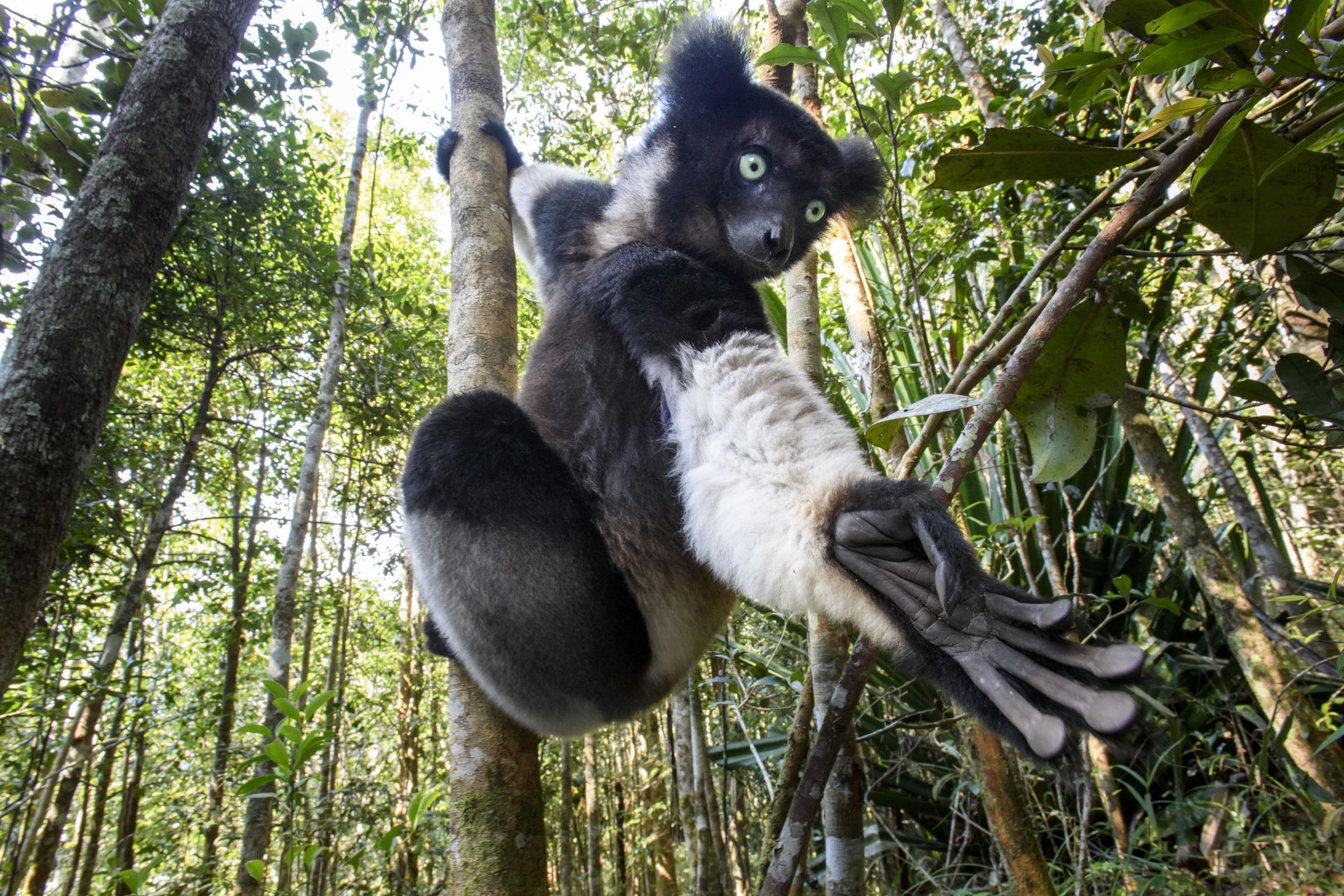
The indri is the largest living lemur species, native to the rainforests of Madagascar. Known for its powerful hind legs, the indri can leap far from tree to tree.
They are also known for their distinctive, loud calls, which can be heard over long distances in the forest.
- Region of Habitat: Madagascar
- Scientific Name: Indri indri
- Place of Origin: Madagascar
- Feeding Habits: Herbivorous, feeding on leaves, flowers, and fruits
- What Sound They Make: Loud, wailing calls
Fun Fact: Indri lemurs are monogamous, forming strong pair bonds with their mates.
Their calls help them maintain territory and communicate with family members.
20. Inyo Mountains Salamander

The Inyo Mountains salamander is a rare species found only in the Inyo Mountains of California. It inhabits rocky outcrops and is adapted to waterless environments.
These salamanders are nocturnal, emerging at night to hunt for insects and other small invertebrates.
- Region of Habitat: Inyo Mountains, California
- Scientific Name: Batrachoseps campi
- Place of Origin: California, USA
- Feeding Habits: Carnivorous, feeding on insects and small invertebrates
- What Sound They Make: Silent
Fun Fact: The Inyo Mountains salamander is one of the few amphibians adapted to desert environments. Their unique habitat preferences make them a subject of interest in herpetology.
21. Irish Setter
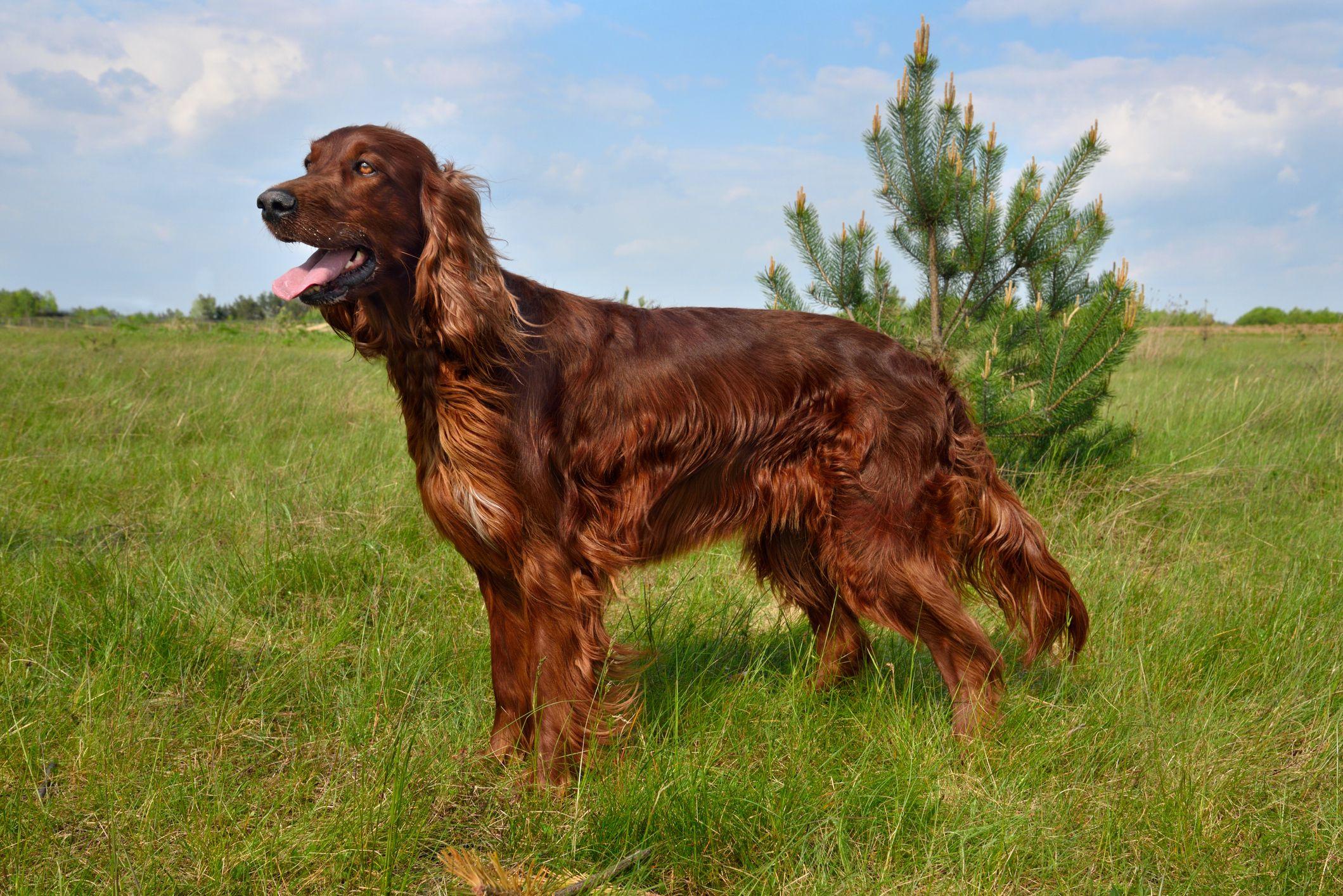
The Irish Setter is a gundog breed known for its rich chestnut-red coat and friendly, energetic nature.
These dogs were originally bred for hunting and are known for their excellent sense of smell and stamina.
- Region of Habitat: Worldwide as pets
- Scientific Name: Canis lupus familiaris
- Place of Origin: Ireland
- Feeding Habits: Omnivorous, primarily commercial pet food
- What Sound They Make: Barks and whines
Fun Fact: Irish Setters are known for their playful and mischievous personalities. Their boundless energy makes them great companions for active families.
22. Irish Terrier

The Irish Terrier is one of the oldest terrier breeds, known for its distinctive red coat and bold, spirited personality.
They were originally bred for hunting and guarding and are highly adaptable.
Irish Terriers make excellent companions, and they are known for their courage and determination.
- Region of Habitat: Worldwide as pets
- Scientific Name: Canis lupus familiaris
- Place of Origin: Ireland
- Feeding Habits: Omnivorous, primarily commercial pet food
- What Sound They Make: Barks and growls
Fun Fact: Irish Terriers are often called the “Daredevils” of the dog world due to their fearless nature. Their boldness and loyalty make them exceptional guardians.
23. Irish Water Spaniel
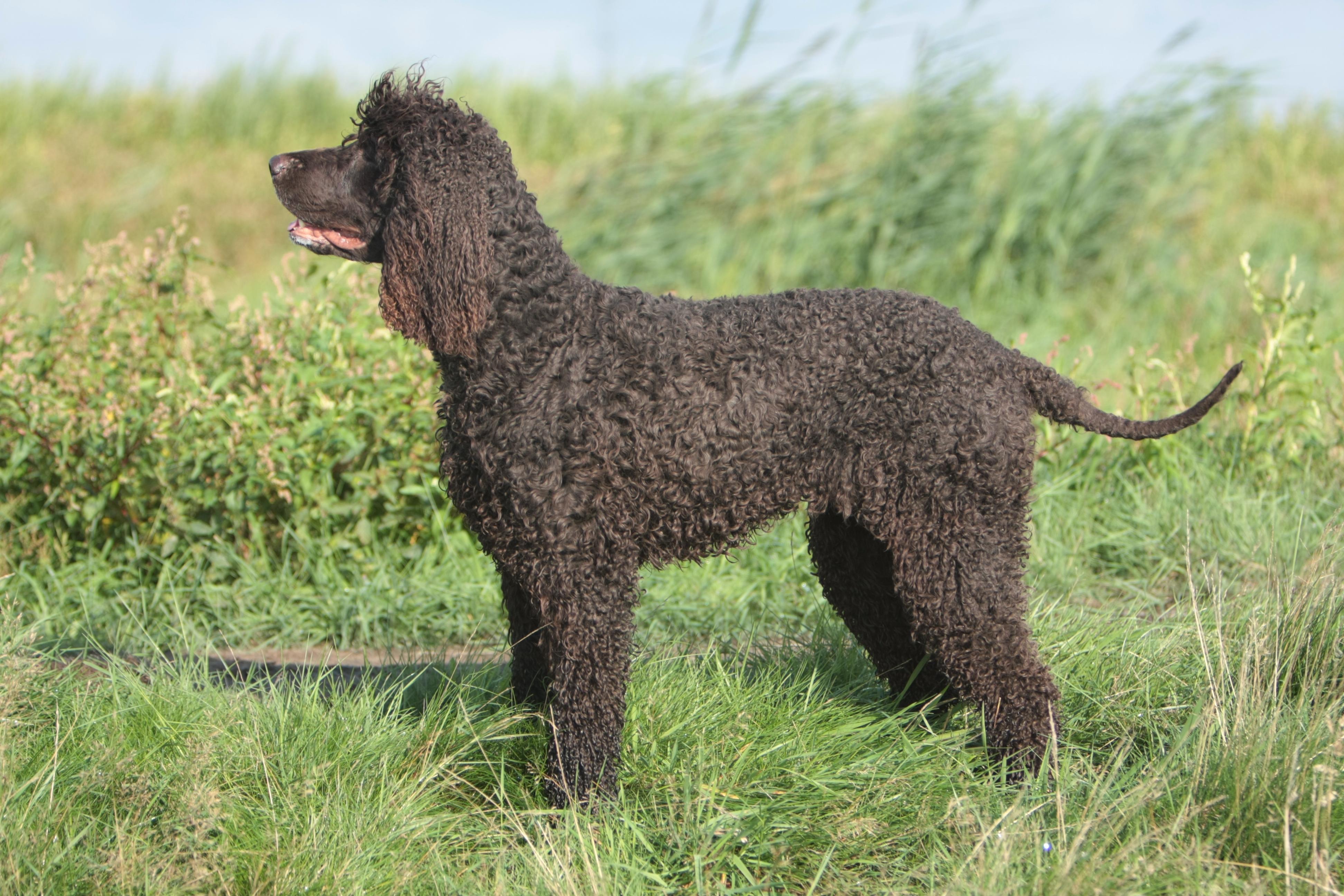
The Irish Water Spaniel is a dog breed known for its curly, water-resistant coat and distinctive topknot.
These dogs were originally bred to retrieve game from water. They have excellent swimming abilities, are intelligent and energetic, and make great companions for active families.
- Region of Habitat: Worldwide as pets
- Scientific Name: Canis lupus familiaris
- Place of Origin: Ireland
- Feeding Habits: Omnivorous, primarily commercial pet food
- What Sound They Make: Barks and whines
Fun Fact: The Irish Water Spaniel is the tallest of the spaniel breeds. Their unique coat and playful nature make them stand out among other dog breeds.
24. Irish Wolfhound
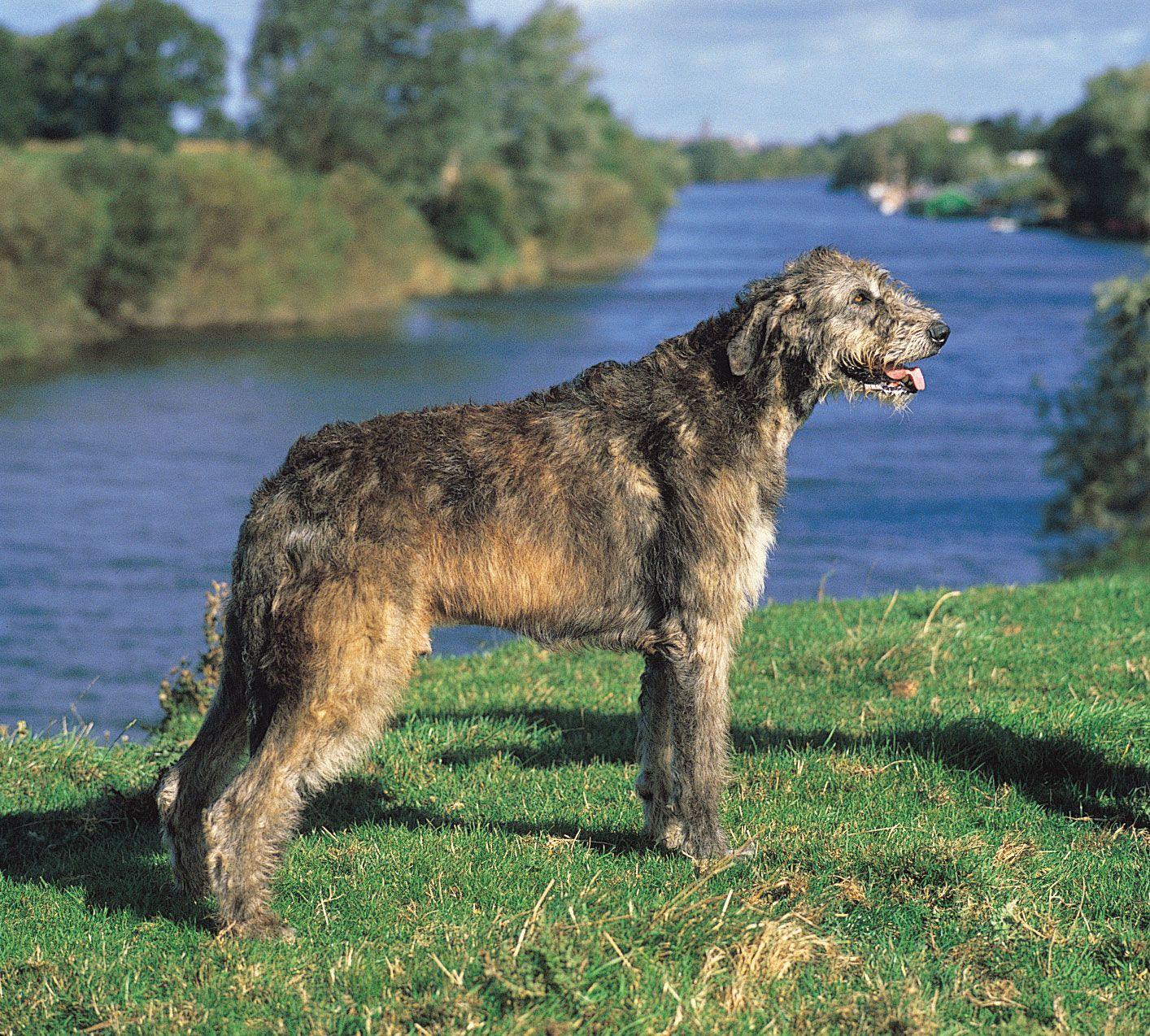
The Irish Wolfhound is one of the tallest dog breeds. It was originally bred to hunt wolves in Ireland.
Known for their gentle and friendly nature, these dogs are called “gentle giants.”
Despite their size, they are known for their calm and loving temperament, making them excellent family pets.
- Region of Habitat: Worldwide as pets
- Scientific Name: Canis lupus familiaris
- Place of Origin: Ireland
- Feeding Habits: Omnivorous, primarily commercial pet food
- What Sound They Make: Barks and howls
Fun Fact: The Irish Wolfhound is the tallest dog breed. Its impressive size and gentle behavior make it a favorite among dog lovers.
25. Italian Greyhound
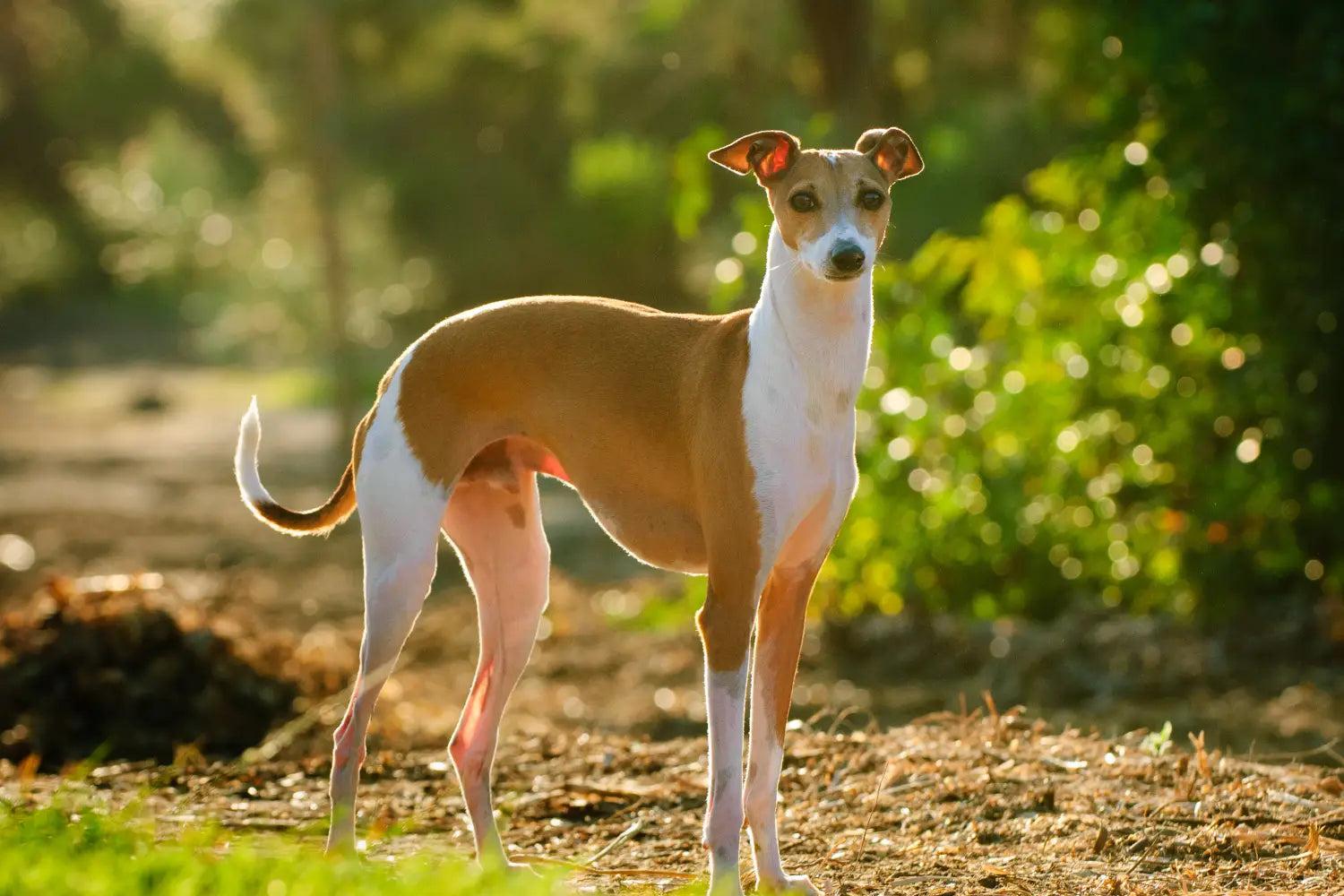
The Italian Greyhound is a small, elegant breed of dog known for its slender build and graceful movement. These dogs were popular among the nobility during the Renaissance.
They are affectionate and playful, making them great companions. Despite their delicate appearance, they are surprisingly strong and athletic.
- Region of Habitat: Worldwide as pets
- Scientific Name: Canis lupus familiaris
- Place of Origin: Italy
- Feeding Habits: Omnivorous, primarily commercial pet food
- What Sound They Make: Barks and whines
Fun Fact: Italian Greyhounds can reach up to 25 miles per hour. Their speed and agility make them exceptional runners and playful companions.
26. Ivory Gull
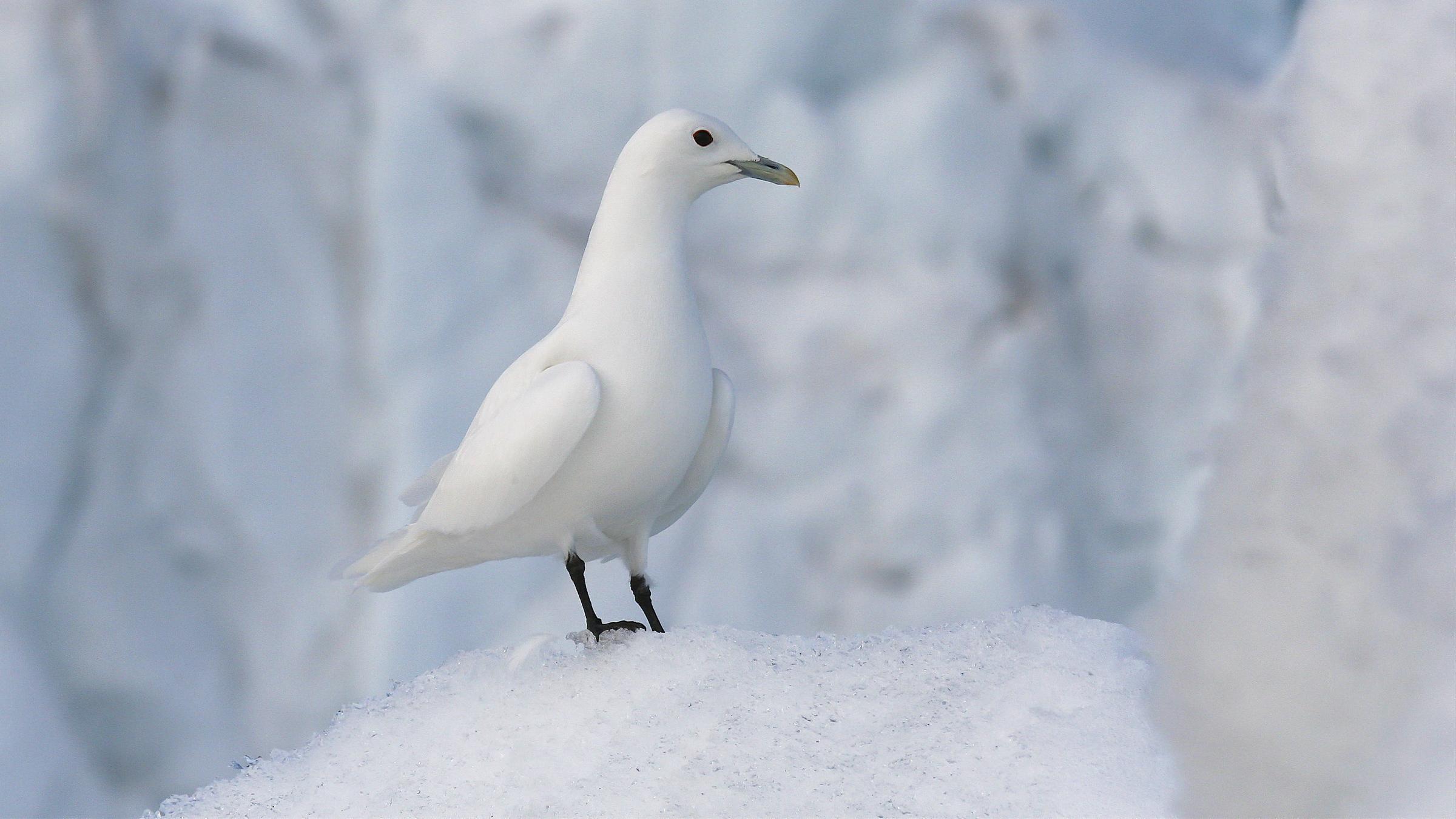
The ivory gull is a small, white gull found in the high Arctic. Known for its striking pure white plumage, it is adapted to life in the cold and is often seen near pack ice.
- Region of Habitat: High Arctic regions
- Scientific Name: Pagophila eburnea
- Place of Origin: Arctic
- Feeding Habits: Carnivorous, feeding on fish and carrion
- What Sound They Make: High-pitched calls
Fun Fact: Ivory gulls often follow polar bears to feed on their leftover kills. This opportunistic feeding strategy helps them survive in the harsh Arctic environment.
27. Izumo Horse
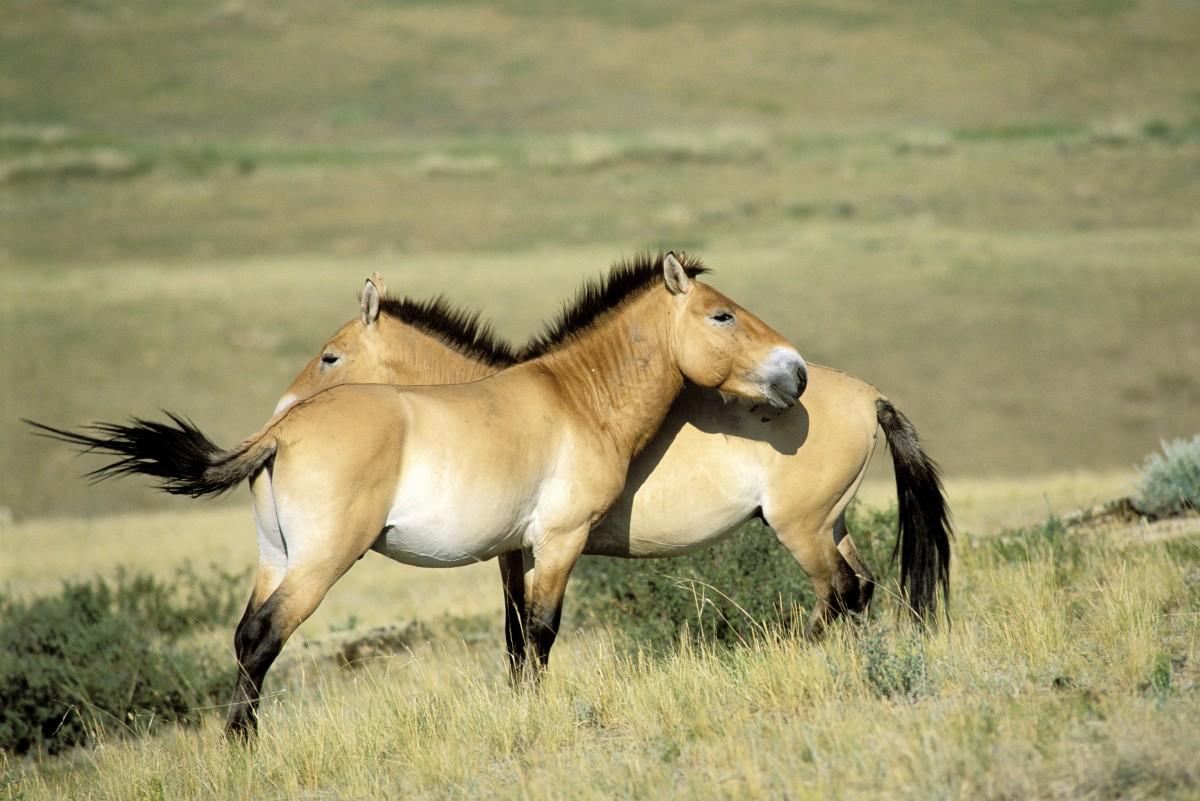
The Izumo horse is a rare Japanese horse known for its small stature and sturdy build.
Historically used for agricultural work and transportation, these horses are now mostly kept for conservation and cultural heritage purposes. They are known for their gentle and calm temperament.
- Region of Habitat: Japan
- Scientific Name: Equus ferus caballus
- Place of Origin: Japan
- Feeding Habits: Herbivorous, feeding on grasses and hay
- What Sound They Make: Neighs and whinnies
Fun Fact: The Izumo horse is one of Japan’s eight indigenous breeds. Their historical significance makes them a treasured part of Japanese heritage.
28. Izak’s Golden-backed Frog
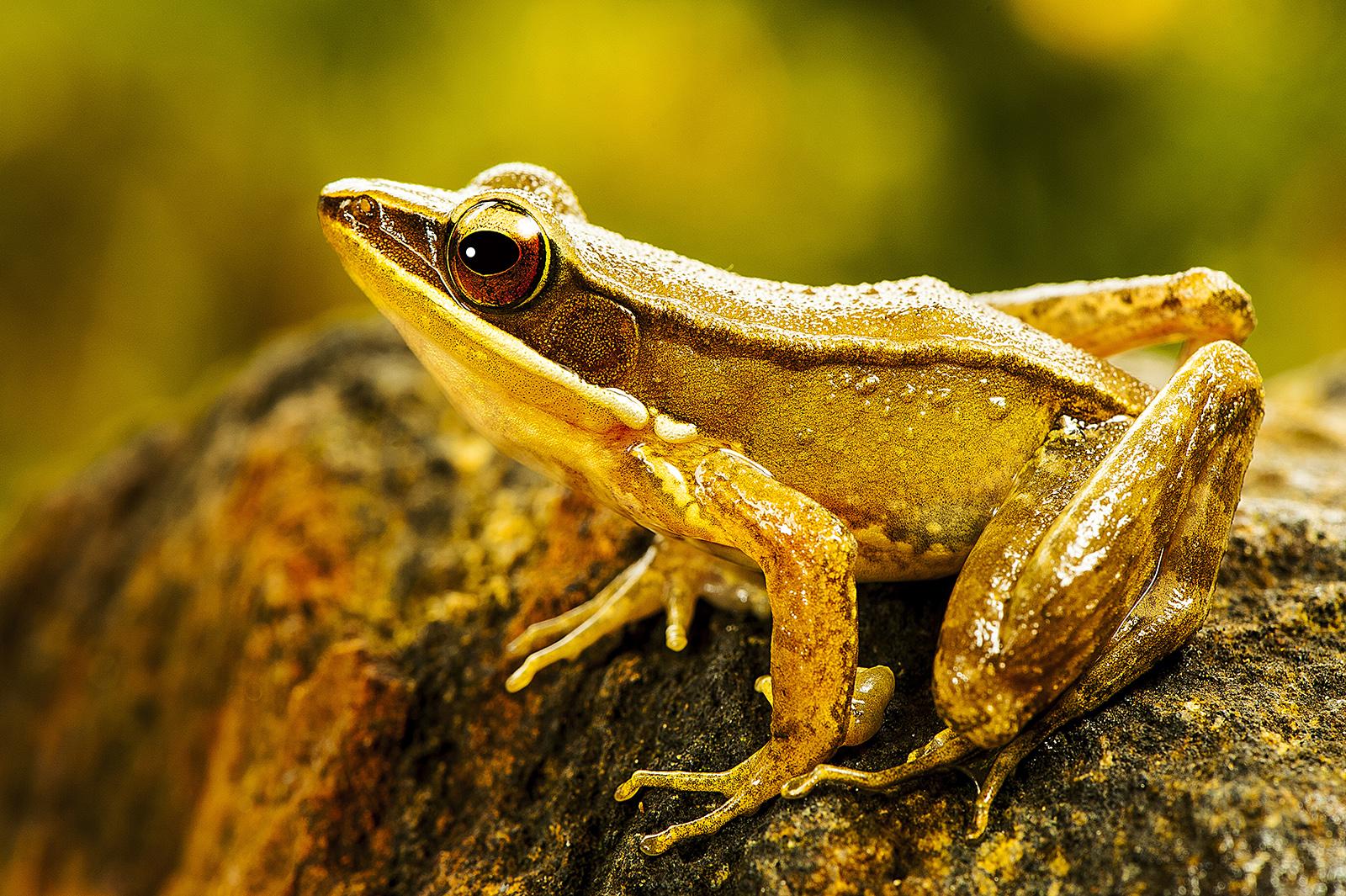
Izak’s Golden-backed Frog is a species found in the Western Ghats of India. It is known for its vibrant golden-yellow coloration on its back, contrasting with its dark body.
These frogs are often found in moist, forested areas and are known for their distinctive calls during the monsoon season.
- Region of Habitat: Western Ghats, India
- Scientific Name: Hylarana aurantiaca
- Place of Origin: India
- Feeding Habits: Carnivorous, feeding on insects and small invertebrates
- What Sound They Make: Croaks
Fun Fact: Izak’s Golden-backed Frog is known for its loud, musical calls during the breeding season, which can be heard over long distances in the forest.
29. Indian Star Tortoise
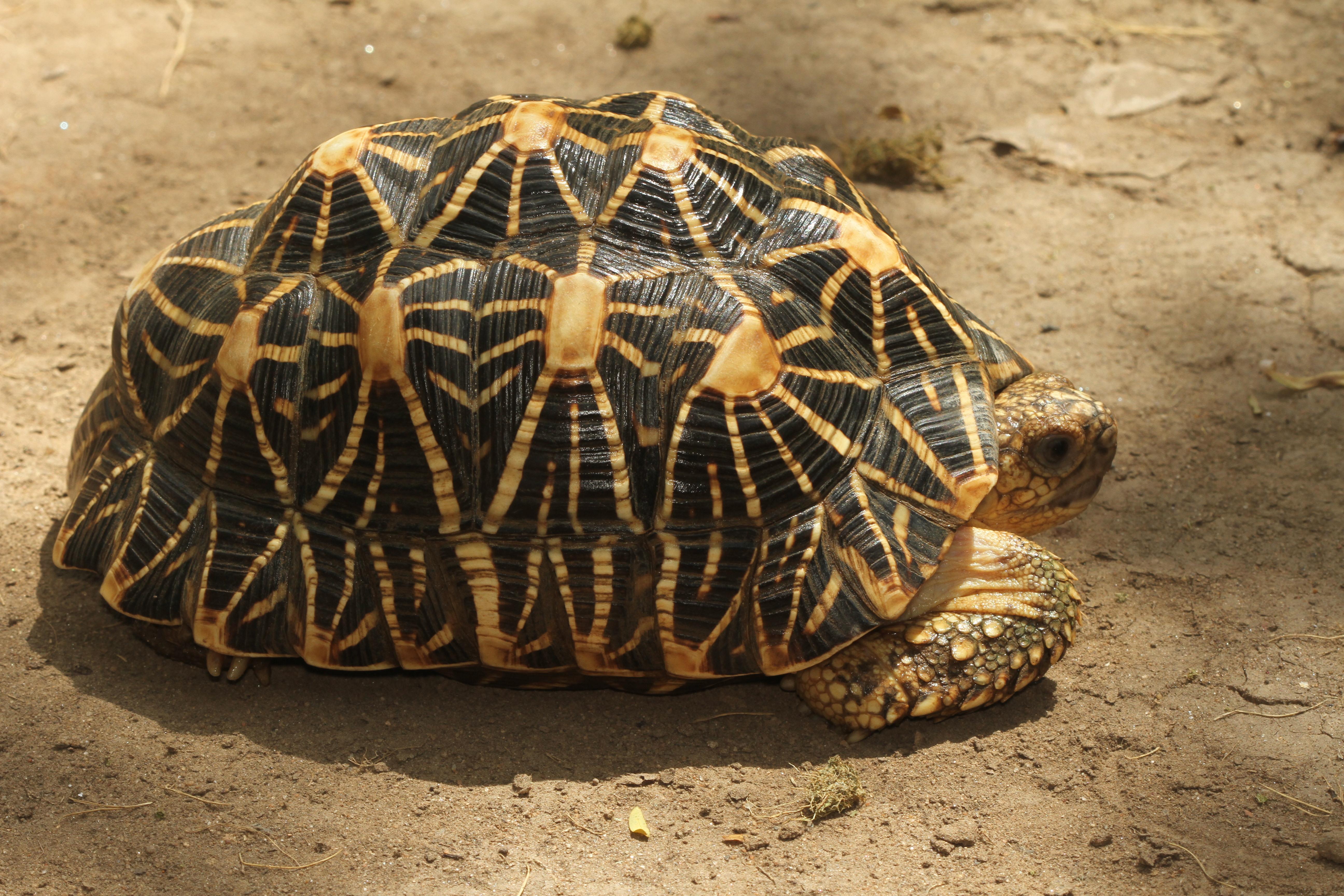
The Indian Star Tortoise is known for its distinctive star-patterned shell, which provides excellent camouflage in its natural habitat.
This species is primarily found in dry areas and scrub forests. It is herbivorous, feeding on grasses, fruits, and flowers.
- Region of Habitat: India, Sri Lanka, Pakistan
- Scientific Name: Geochelone elegans
- Place of Origin: India, Sri Lanka, Pakistan
- Feeding Habits: Herbivorous, feeding on grasses, fruits, and flowers
- What Sound They Make: Hisses
Fun Fact: The star pattern on their shells helps them blend into the surrounding foliage, protecting them from predators.
Their unique appearance makes them highly sought after in the pet trade.
30. Iriomote Cat
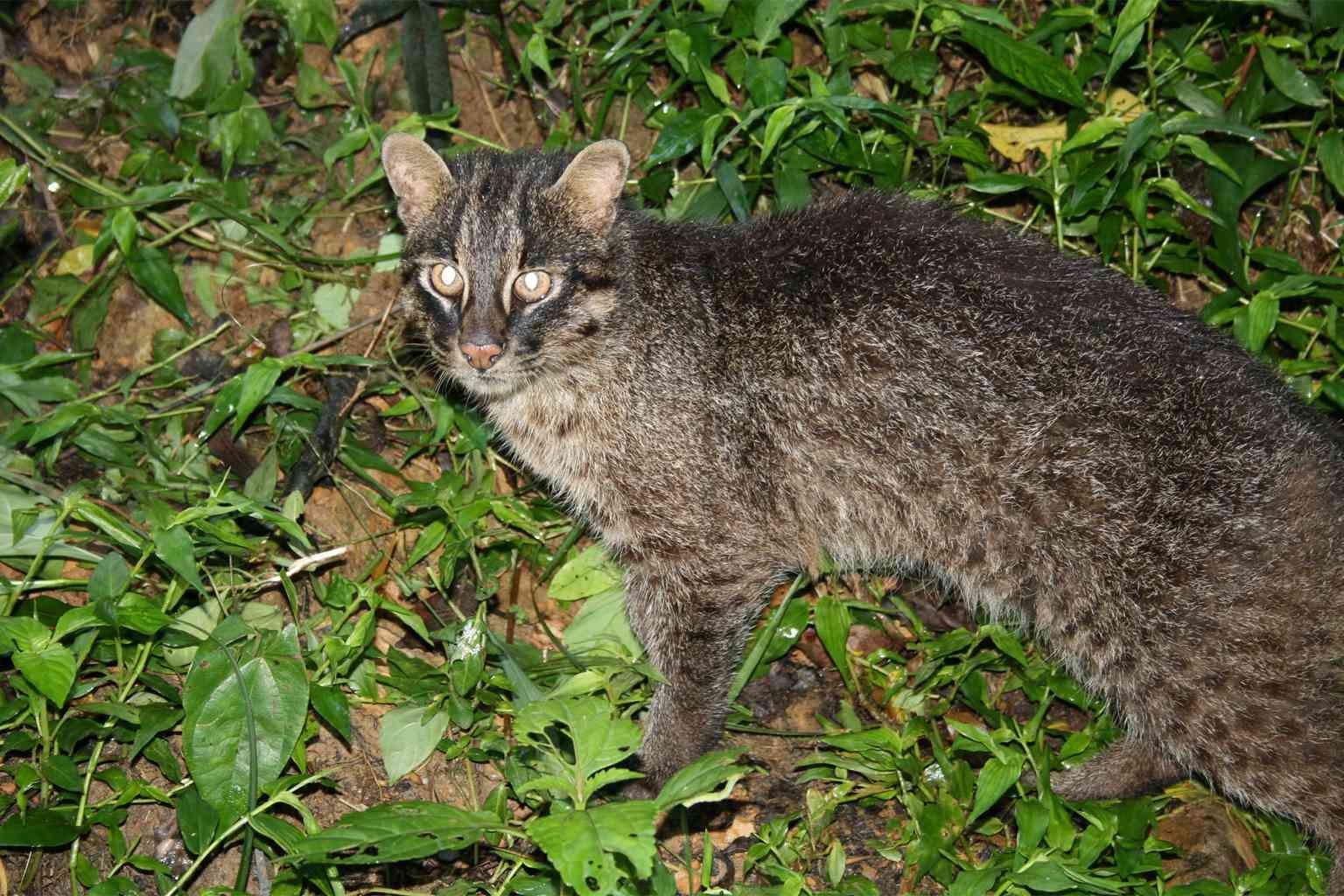
The Iriomote cat is a small wild cat found only on the Japanese island of Iriomote. This tricky feline has a dark, leopard-like coat and is adapted to its dense forest habitat.
It is a solitary and nocturnal predator, primarily hunting small mammals, birds, and insects.
- Region of Habitat: Iriomote Island, Japan
- Scientific Name: Prionailurus bengalensis iriomotensis
- Place of Origin: Iriomote Island, Japan
- Feeding Habits: Carnivorous, feeding on small mammals, birds, and insects
- What Sound They Make: Meows and growls
Fun Fact: The Iriomote cat is one of the few species that regularly swim and is known to be nocturnal.
With an estimated population of just a few hundred individuals, it is critically endangered and faces significant conservation challenges.
Conclusion
As we wrap up our journey through the engaging world of animals with I, it’s clear that nature’s diversity never ceases to amaze us.
These creatures showcase incredible adaptations and behaviors, from the industrious iguana to the intelligent ibex.
Our exploration has taken us across various habitats, from icy polar regions to tropical rainforests, highlighting how these animals thrive in their environments.
We hope this list has sparked your curiosity and deepened your appreciation for the animal kingdom.
Whether you’re drawn to the iconic image of the imperial eagle or intrigued by the lesser-known indri, there’s always more to learn about animals with I.
What’s your favorite animal? Consider sharing your thoughts and continuing to explore the wonders of wildlife.















